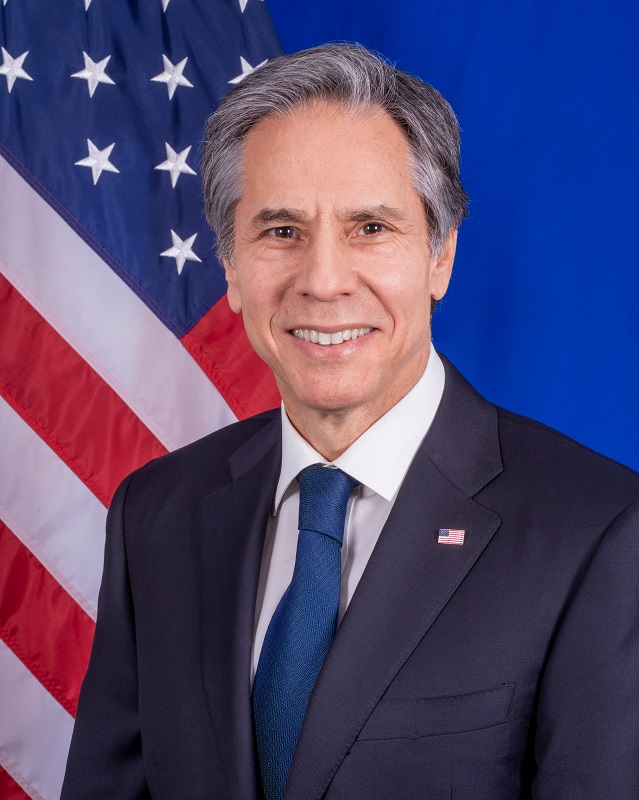U.S. Secretary of State Antony J. Blinken on Monday at the U.S.-India Business Council’s India Ideas Summit asserted that the trajectory of the India-U.S. partnership is filled with promise.
Blinken said: “Last year, as you all know, trade between our nations reached a record $191 billion, making the United States the largest trading partner for India. American companies have now invested at least $54 billion in India, from manufacturing to telecommunications. In the United States, Indian companies have invested over $40 billion in IT, in pharmaceuticals, and more, supporting 425,000 jobs from California to Georgia. Just this February, Air India announced the historic purchase of more than 200 Boeing aircraft, which will support an estimated 1 million-plus jobs across 44 of the United States.”
He added: “Both the U.S. and India are making transformative investments in our own countries to build our own strength – [U.S.] President [Joe] Biden’s $1.2 trillion Bipartisan Infrastructure Law, followed after that by the CHIPS Act, and as well the Inflation Reduction Act; [Indian] Prime Minister [Narendra] Modi’s 100 trillion rupee infrastructure plan. All of this will make our economies more productive and more attractive for investors. And India has joined three pillars of our new Indo-Pacific Economic Framework – committing to build more resilient supply chains, to seize clean energy opportunities, and to combat corruption and other challenges that undermine the efforts of our governments.”
Blinken pointed out: “Together, we’re helping to shape the innovations of the future, but not just the innovations themselves, also – and this is so critical – the norms, the standards, and rules that govern them, from artificial intelligence to quantum computing. In January, this council co-hosted a roundtable where our two governments inaugurated a new initiative on Critical and Emerging Technologies. We’re elevating and expanding the strategic technology partnership between governments, but also between businesses, between academic institutions in both our countries – because we believe how technology is designed, how it is used should be informed by democratic values and respect for human rights.”
He added: “Central to all of this cooperation is diversifying and deepening our supply chains with trusted countries, while also reducing strategic dependencies. My friend and colleague Secretary of Commerce [Gina] Raimondo and her counterpart [Indian] Minister [of Commerce and Industry Piyush] Goyal recently established a partnership to make our semiconductor supply chains more resilient. In Tamil Nadu, the U.S. International Development Finance Corporation…provided $500 million to help a leading American company build a solar manufacturing facility. This project will power roughly 30 million lightbulbs in homes, in schools, in businesses across India; it will create over a thousand jobs for Indians and Americans; and maybe most significantly, it will shift a key component of our clean energy supply chains to a close partner. That’s what we mean when we say we are building more resilient, more diversified supply chains.”
Regarding investing in people, Blinken said: “The U.S. and India’s education systems have produced the leaders of some of our most iconic companies – from Google to InfoSys to – not to mention former Mastercard CEO Ajay Banga, who is now of course the new president of the World Bank and onetime president of the USIBC. Indian Americans have created a third – a third – of all immigrant-founded startups in the United States. Think about that for a minute. That is extraordinarily powerful.”
He added: “And maybe most significant for the future – for the future of ties between our countries – we have more than 200,000 Indians studying in American universities, making India the second-largest source of international students in the United States, and we want to continue encouraging that remarkable dynamism. This is how you build the bridges of the future.
“At Howard University last year, when [Indian] Foreign Minister [Subrahmanyam] Jaishankar was visiting, the two of us went there together and we announced an Education and Skills Development Working Group to try to address skills gaps, to promote vocational training, to spur entrepreneurship in our countries. Whether it’s investing and inventing new technologies, whether it’s combating the climate crisis, whether it’s helping to build more inclusive economies, I have tremendous confidence that the rising generation of Indians, the rising generation of Americans will take the relationship between us to new heights. And in doing that they will not only benefit our countries, they will benefit the entire world.”
Blinken said: “Now, we know that India and the United States are big, complicated countries. We certainly have work to do to advance transparency, to promote market access, to strengthen our democracies, to unleash the full potential of our people.”
He added: “But the trajectory of this partnership is unmistakable, and it is filled with promise. It’s being written in places like North Carolina, where our growing engagement is benefiting both our countries. The Tar Heel State has become a hub for Indian investment, with tech companies like HCL creating 2,400 jobs, training American high schoolers for IT careers. Meanwhile, Charlotte-based Honeywell is employing 13,000 people from Kolkata to Mumbai, making safer airplanes, making energy-efficient buildings. Duke University has established a presence in Bangalore, strengthening academic and research exchanges between our people. Commenting on this explosion of U.S.-India commercial activity, one North Carolina entrepreneur from Gujarat observed, and I quote, “This could not have happened 15 years ago.””
Blinken said: “I talked about that we couldn’t imagine this 15 years ago. What I’m now trying to imagine and what I know you’re all working on – not only imagining but bringing to life – is what this is going to look like 15 years from now or 50 years from now, and all the benefits that it will bring to Indians and Americans alike.”











